| __timestamp | HubSpot, Inc. | Workday, Inc. |
|---|---|---|
| Wednesday, January 1, 2014 | 115876000 | 468938000 |
| Thursday, January 1, 2015 | 181943000 | 787860000 |
| Friday, January 1, 2016 | 270967000 | 1162346000 |
| Sunday, January 1, 2017 | 375612000 | 1569407000 |
| Monday, January 1, 2018 | 512980000 | 2143050000 |
| Tuesday, January 1, 2019 | 674860000 | 2822180000 |
| Wednesday, January 1, 2020 | 883026000 | 3627206000 |
| Friday, January 1, 2021 | 1300658000 | 4317996000 |
| Saturday, January 1, 2022 | 1730969000 | 5138798000 |
| Sunday, January 1, 2023 | 2170230000 | 6215818000 |
| Monday, January 1, 2024 | 2627543000 | 7259000000 |
Data in motion
In the ever-evolving tech landscape, Workday, Inc. and HubSpot, Inc. have emerged as significant players, each carving out a unique niche. Over the past decade, both companies have demonstrated impressive revenue growth, reflecting their strategic prowess and market adaptability.
Since 2014, Workday's revenue has surged by over 1,400%, reaching approximately $6.2 billion by 2023. This consistent upward trajectory underscores Workday's robust business model and its ability to meet the growing demand for enterprise cloud applications.
HubSpot, on the other hand, has experienced a remarkable 1,800% increase in revenue, climbing to around $2.2 billion in the same period. This growth highlights HubSpot's success in the competitive CRM and marketing software space.
While Workday continues to lead in absolute revenue, HubSpot's rapid growth rate is a testament to its innovative approach and market penetration. As we look to the future, both companies are poised to continue their upward momentum, albeit with different strategies and market focuses.
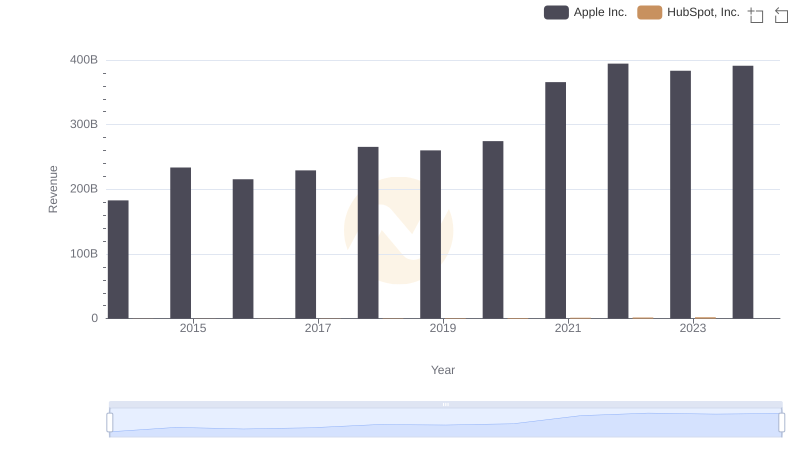
Apple Inc. and HubSpot, Inc.: A Comprehensive Revenue Analysis
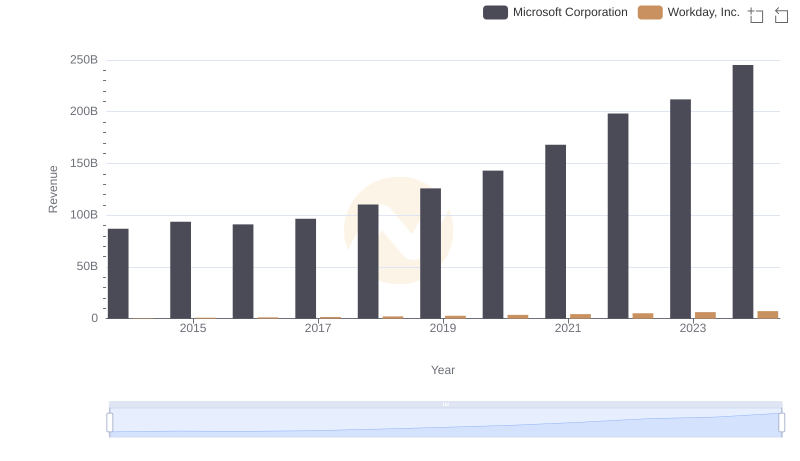
Revenue Insights: Microsoft Corporation and Workday, Inc. Performance Compared
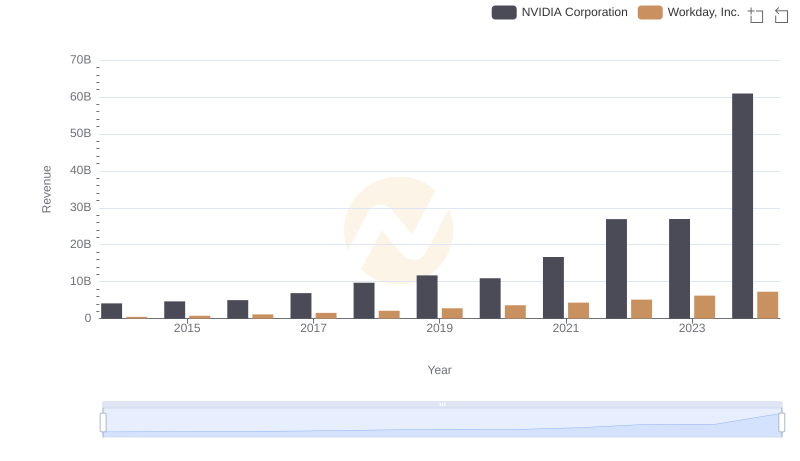
NVIDIA Corporation and Workday, Inc.: A Comprehensive Revenue Analysis
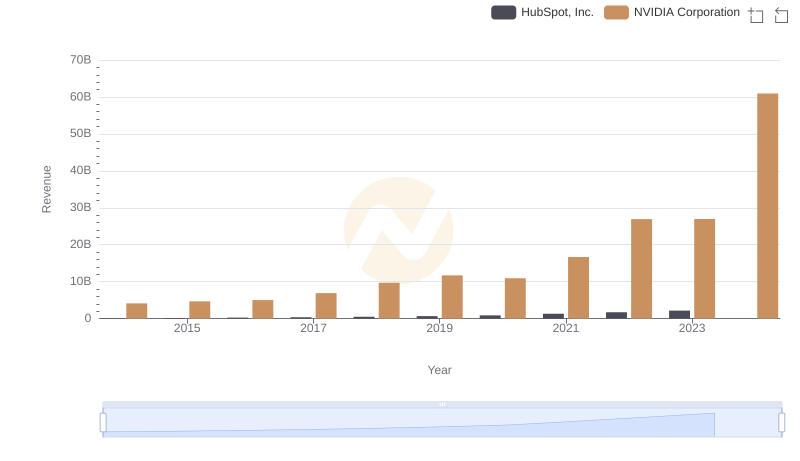
Revenue Showdown: NVIDIA Corporation vs HubSpot, Inc.
Breaking Down Revenue Trends: Taiwan Semiconductor Manufacturing Company Limited vs Workday, Inc.
Taiwan Semiconductor Manufacturing Company Limited and HubSpot, Inc.: A Comprehensive Revenue Analysis
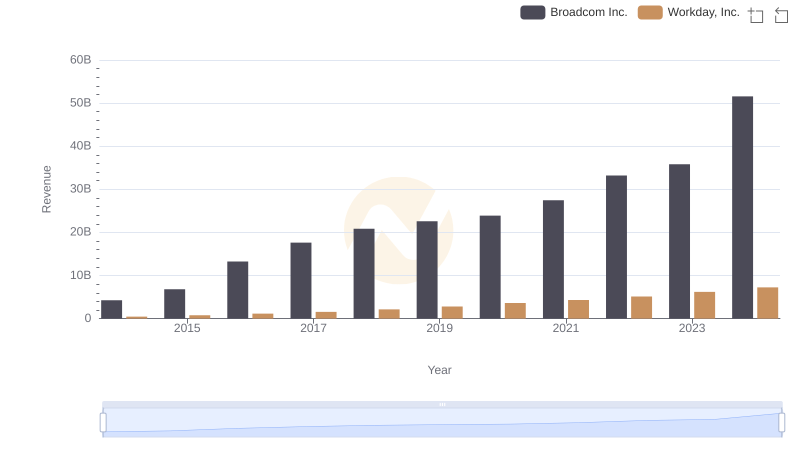
Annual Revenue Comparison: Broadcom Inc. vs Workday, Inc.
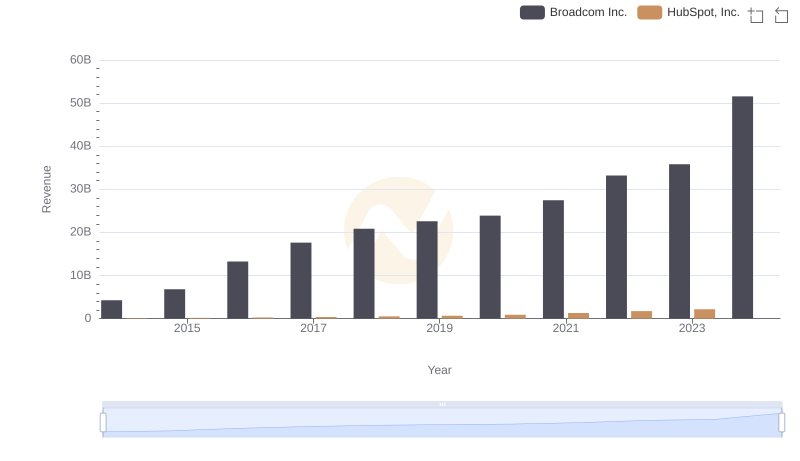
Broadcom Inc. and HubSpot, Inc.: A Comprehensive Revenue Analysis
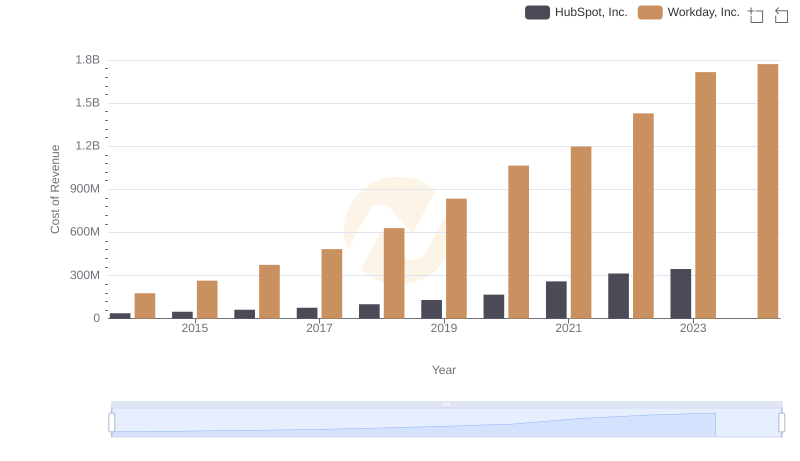
Cost Insights: Breaking Down Workday, Inc. and HubSpot, Inc.'s Expenses
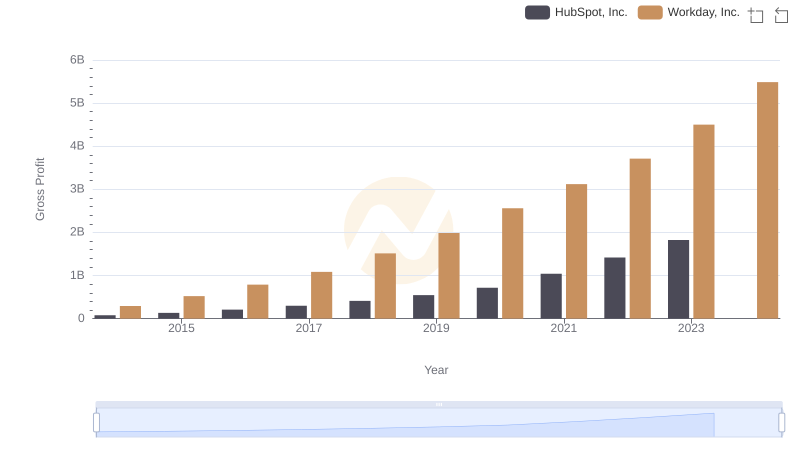
Workday, Inc. and HubSpot, Inc.: A Detailed Gross Profit Analysis
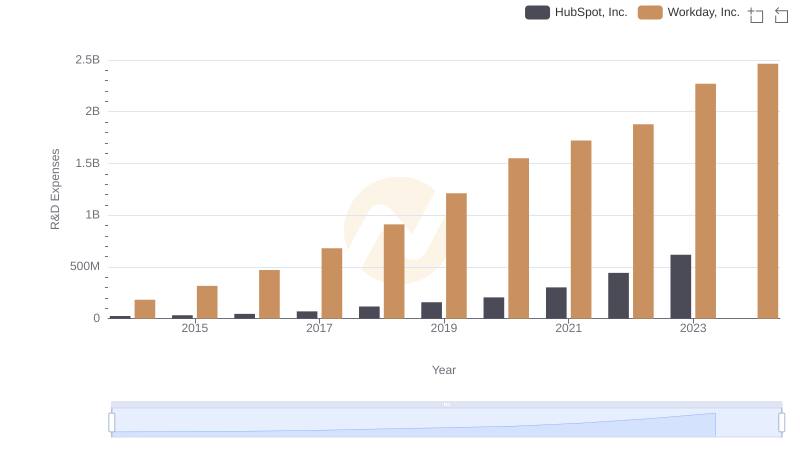
Analyzing R&D Budgets: Workday, Inc. vs HubSpot, Inc.
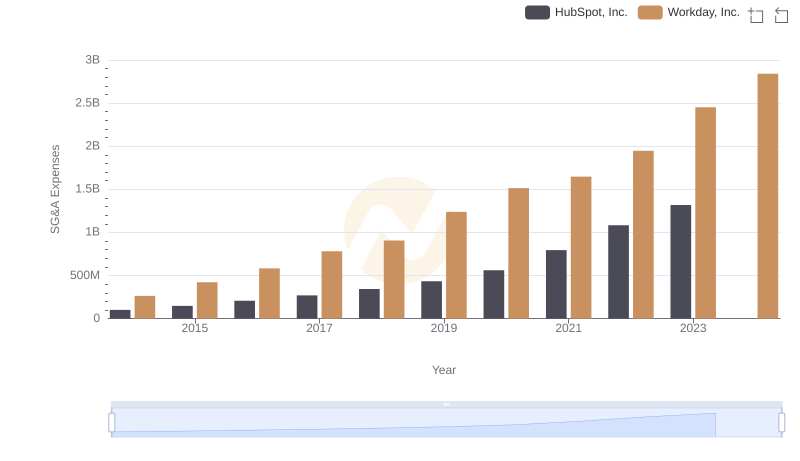
Operational Costs Compared: SG&A Analysis of Workday, Inc. and HubSpot, Inc.